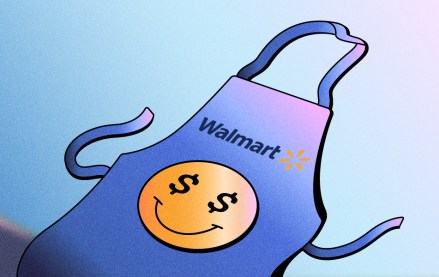Register by Jan 13 to save on passes and connect with marketers from Uber, Bose and more
How leading publishers use data to refine subscription and ad strategies

Michael Silberman, evp of media strategy, Piano
Between AI search summaries and declining referrals from social media, publishers are feeling the pressure when it comes to site traffic.
Piano’s data backs this up: Between 2022 and 2024, benchmark data across Piano clients found that traffic growth was fairly flat — it increased by only 5%. The uncertainty in site traffic means that each unique visitor is now even more valuable.
Yet even with stagnant or declining traffic, publishers can increase revenue and engagement. In that same period, between 2022 and 2024, conversions increased by 14% and subscription revenue surged by 28%. An even more unexpected finding? Among the sites with a decline in traffic, 54% of them experienced an increase in conversions.
What’s driving that growth? It starts with an in-depth understanding of audiences, and savvy publishers are using that data to gain a competitive advantage.
Identifying visitors most likely to convert
Certain behaviors are well-known in digital subscriptions. For example, frequent visitors are more likely to subscribe, and social media visitors are less likely to subscribe. But generalizations can only take publishers so far. The data shows a segment of social media users do subscribe, and targeting a paywall based on just pageview thresholds is a blunt instrument at best.
Consider the case of i-Paper, a U.K. news publication under dmg media’s suite of brands. After implementing Piano’s Likelihood to Subscribe propensity model, which predicts which users are most likely to subscribe, i-Paper learned that the conversion rate for the highest propensity segment was 174 times greater than the lowest segment.
The i-Paper team looked more closely at this group of likely subscribers and learned that registered users were 30 times more likely to subscribe than anonymous readers. Informed by this data, the team found the right mix between registration prompts and subscription offers, leading to a five-fold increase in conversion rates.
Optimizing for total revenue, not one channel over another
More recently, El Mundo, a leading media publication in Spain, wanted to increase subscriptions, but its freemium content strategy limited its growth. Only a small portion of El Mundo’s articles were paywalled, and most users were never asked to pay. When the publisher experimented with tightening its rules, El Mundo saw a drop in pageviews. It faced a hard choice: By optimizing for subscriptions, the publisher was losing ad revenue because of fewer pageviews and ad impressions.
El Mundo enlisted Piano to test its Ad Revenue Insights and dynamic paywall. The model works by factoring in both ad revenue and subscription revenue to predict when to show a paywall and when to let a user keep reading to collect more ad revenue.
Piano tested the dynamic, revenue-optimizing paywall versus El Mundo’s freemium setup. The dynamic paywall targeting was split — the high ad value segment saw no paywall at all, the high subscription value segment saw a paywall and the middle segment saw a registration wall.
Compared with a control group, the success of this strategy was clear. It resulted in a 60% increase in subscribers, a 51% increase in subscription revenue and five times more registrations — all with minimal impact on El Mundo’s advertising revenue.
Ensuring teams work toward the same goals
The right tech stack is important. But what’s equally important is ensuring that internal teams share the same goals. Often, ads, content and growth teams chase different KPIs, creating silos and misalignment.
That’s where a shared set of analytics comes in. For Pulitzer-Prize winning publisher The Post and Courier, South Carolina’s leading independent newspaper, that alignment was a critical piece of its strategy. Piano gave each department a shared lens to see its KPIs in the context of the overall revenue engine. That meant each team, including news, audience and advertising, was speaking the same language and working toward the same strategy.
By using Piano’s Ad Revenue Insights, the Post and Courier — similar to El Mundo — is optimizing for total revenue. After implementing Piano’s Dynamic Paywall Model, it saw a 57% increase in paywall revenue and a 54% increase in ad revenue, proving that subscription growth and ad revenue don’t need to compete.
Designing a data-activated strategy
The most successful publishers aren’t just data-informed — they’re data-activated. They move beyond observation to orchestration, using audience signals to shape experiences in real time. And they never stop testing, learning and optimizing.
Growth is driven by decisions that are strategic, precise and embedded into every touchpoint. In a crowded market, the edge belongs to those who treat data not as a tool, but as the engine of their strategy.
Sponsored by Piano
More from Digiday

Inside the brand and agency scramble for first-party data in the AI era
Brands are moving faster to own first-party data as AI and privacy changes alter the digital advertising landscape.

Future starts to sharpen its AI search visibility playbook
Future is boosting AI search citations and mentions with a tool called Future Optic, and offering the product to branded content clients.

Walmart Connect takes a play out of the Amazon playbook to make agentic AI the next battleground in retail media
The next retail media war is between Walmart Connect’s Sparky and Amazon’s Rufus, driven by agentic AI and first-party data.








